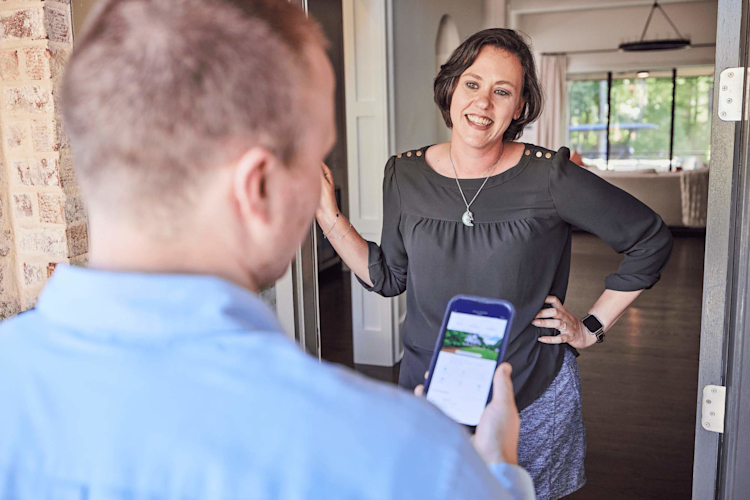10 Essential KPIs for Pest Control Businesses to Track Growth

A KPI (key performance indicator) is a measurable value that shows how effectively a business achieves key objectives.
For pest control companies, KPIs provide insights into profitability, customer experience, and operational efficiency.
By tracking KPIs, pest control businesses can identify strengths, pinpoint areas for improvement, and make data-driven decisions to support growth.
Pest control KPIs are tailored metrics that assess technician productivity, customer retention, revenue growth, and cost management. They help business owners evaluate performance relative to industry benchmarks and strategic goals, ensuring a clear view of business health.
Tracking KPIs for your pest control services is important because it keeps the business aligned with its goals, helps optimize resource allocation, and enhances decision-making. KPIs allow firms to set measurable targets, monitor progress, and adjust strategies as needed to maintain a competitive edge.
Let’s explore some essential KPIs for your pest control business and how each can support long-term success.
Gross Profit Margin: A Key Financial Metric
Financials like gross profit margin show how much profit your pest control business keeps after paying direct costs like technician labor, supplies, and pesticides. It’s basically whether your services are profitable. For example, if a pest control service charges $120 an hour and has direct costs of $60 an hour, the gross profit is $60. To calculate gross profit margin:
Gross Profit = Revenue – Direct Costs
Gross Profit Margin = (Gross Profit / Revenue) x 100
In this example: Gross Profit Margin = ($60 / $120) x 100 = 50%
Why It’s Important for Pest Control Businesses
A strong gross profit margin means your pest control business can cover its fixed costs, such as rent and salaries, and contribute to the bottom line. By tracking this KPI, you can see where to adjust pricing, manage costs, and increase profitability.
Potential Benchmarks/Ways to Evaluate the KPI
Target a 50-55% gross profit margin—a healthy range in the pest control industry. Measure margins against industry standards to ensure you’re pricing correctly and profitably.
2. Net Profit Margin
Net profit margin or net margin is the percentage of revenue that is profit after all expenses, including operating costs, taxes, and interest, have been deducted. It’s calculated by dividing net income by revenue and then multiplying by 100. This KPI shows how well a pest control business converts revenue into profit.
Net Profit Margin = (Net Income / Revenue) x 100
For example, if a pest control business has $200,000 in revenue and $40,000 in net income:
Net Profit Margin = ($40,000 / $200,000) x 100 = 20%
Why It’s Important for Pest Control Businesses
An excellent net profit margin means the business is financially healthy and is managing its costs relative to revenue. This KPI will guide pricing, cost-cutting, and investment decisions.
Potential Benchmarks/Ways to Evaluate the KPI
The pest control industry's 15-20% net profit margin is excellent. Review this margin regularly to ensure expenses are controlled and revenue-generating strategies are working.
3. Annual Revenue Growth
Annual revenue growth is the percentage increase in revenue from one year to the next. It shows how well a pest control business is growing. It’s the ability to attract and retain customers, add new services or increase pricing. This metric is calculated by subtracting last year’s revenue from this year’s, dividing by last year’s, and multiplying by 100.
Annual Revenue Growth = ((Current Year Revenue - Previous Year Revenue) / Previous Year Revenue) x 100
For example, if last year’s revenue was $500,000 and this year’s revenue is $600,000:
Annual Revenue Growth = ($600,000 - $500,000) / $500,000 x 100 = 20%
Why It’s Important for Pest Control Businesses
Revenue growth equals profitability, valuation, and employee morale, which is a healthy growing business. For pest control companies, it also means customer satisfaction and market relevance.
Increasing Revenue with Marketing KPIs
Strategic marketing strategies guided by key KPIs can drive revenue growth by attracting and increasing your customer retention rate. FieldRoutes integrates with ServiceTitan Marketing Pro, automating email and direct mail campaigns to engage new customers. FieldRoutes customers using ServiceTitan Marketing Pro see a 2.7X ROI when they send multiple campaigns.
Potential Benchmarks/Ways to Evaluate the KPI
Target steady annual revenue growth of 10-20% to keep up with or beat industry standards. Review marketing impact and customer retention rates to optimize this metric.
4. Days Sales Outstanding (DSO)
Days Sales Outstanding (DSO) is the average number of days a pest control business takes to collect payment after a service is completed. Lower DSO means quicker invoicing and collection, better cash flow, and less harmful debt risk. To calculate DSO, divide accounts receivable by total credit sales and multiply by the number of days in the period.
DSO = (Accounts Receivable / Total Credit Sales) x Days in Period
For example, if a pest control company has $50,000 in accounts receivable and $100,000 in credit sales over 30 days: DSO = ($50,000 / $100,000) x 30 = 15 days
Why It’s Important for Pest Control Businesses
Managing DSO is critical to cash flow and operational stability. FieldRoutes has an integrated Payments Suite to automate invoicing and streamline collection processes. By adapting to customer payment preferences and automating manual tasks, FieldRoutes reduces DSO and improves cash flow and delinquencies. Pest management businesses can reduce financial stress and focus on growth with faster payments.
Potential Benchmarks/Ways to Evaluate the KPI
A DSO under 30 days is good. Review this KPI regularly to maintain a steady cash flow and reduce outstanding payments.
5. Average Revenue Per Employee
Average revenue per employee is the revenue generated by each employee in a pest control business to measure workforce productivity. It’s calculated by dividing total revenue over the last 12 months by the number of full-time employees.
Average Revenue Per Employee = Total Revenue / Number of Employees
For example, if a pest control company earns $1,000,000 per year and has 20 employees:
Average Revenue Per Employee = $1,000,000 / 20 = $50,000 per employee
Why It’s Important for Pest Control Businesses
This KPI measures workforce efficiency and profitability so business owners can see if staffing is aligned with revenue goals. High revenue per employee means effective productivity or optimized team size, while low means inefficiency or overstaffing.
Potential Benchmarks/Ways to Evaluate the KPI
Compare to industry standards to see where you can improve. In pest control, aim for steady year-over-year growth to drive profitability and utilize the workforce.
6. Average Revenue Per Pest Control Technician
Average revenue per pest control technician measures the revenue generated by each technician to measure technician productivity and efficiency. This KPI helps identify high-performing technicians, measure the effectiveness of training programs, and determine where to improve service delivery.
Average Revenue Per Technician = Total Revenue / Number of Technicians
For example, if a pest control business earns $600,000 and has ten technicians: Average Revenue Per Technician = $600,000 / 10 = $60,000 per technician
Why It’s Important for Pest Control Businesses
This KPI shows each technician's value to the business when handling pest infestations, helping with workforce planning and profitability. It can also indicate if certain technicians need additional training to maximize productivity.
Potential Benchmarks/Ways to Evaluate the KPI
Benchmark against industry standards and adjust for business size and market to see if technicians meet productivity expectations. Consistent improvement in this metric is vital to maintaining high service standards and profitability
7. Technician Utilization
Technician utilization is the percentage of time technicians spend on customer service versus time spent traveling or waiting. It’s calculated by dividing hours technicians spend on actual service tasks by total work hours. For example, if a technician works 8 hours but only 5 of those are billable hours on site, the utilization rate is:
Technician Utilization = (Billable Hours or Time spent handling tickets / Total Work Hours) x 100
In this case, Technician Utilization = (5 / 8) x 100 = 62.5%
Why It’s Important for Pest Control Businesses
High technician utilization is key to profitability and operational efficiency as technicians maximize time on billable tasks.
FieldRoutes’ Field Service Routing tool can improve technician utilization by optimizing routing and scheduling, reducing travel time, and increasing on-site time. With FieldRoutes, pest control companies can fit more appointments daily, reduce non-billable hours, and increase productivity.
Potential Benchmarks/Ways to Evaluate the KPI
To be productive, aim for a utilization rate above 70%. Review this KPI regularly to see if technicians are used efficiently and if scheduling strategies are optimized.
8. Customer Cancellations
Customer cancellation rate measures the frequency with which customers cancel their pest control services, often because of great customer service. Reducing cancellations means a stable revenue stream, better resource allocation, and, ultimately, more profitability. This KPI is calculated by dividing the number of cancellations by the total number of customers and then multiplying by 100.
Cancellation Rate = (Number of Cancellations / Total Customers) x 100
For example, if a company has 500 customers and ten cancellations in a month: Cancellation Rate = (10 / 500) x 100 = 2%
Why It’s Important for Pest Control Businesses
High cancellation rates mean issues with customer satisfaction, pricing, or service quality. Keeping this KPI low is critical to steady growth and reducing sales and marketing costs of replacing lost customers.
Potential Benchmarks/Ways to Evaluate the KPI
Aim for a cancellation rate below 5%. Review feedback from canceled customers to see what’s causing the cancellations.
9. Active Subscriptions
Active subscriptions are the number of service agreements or memberships for recurring pest control treatments. Increasing active subscriptions gives pest control companies a steady, predictable revenue stream. Typical recurring clients—hotels, restaurants, and facilities—benefit from regular services, and businesses benefit from stable revenue and reduced financial risk.
Calculation: Simply count the number of active, billed memberships in a given period (monthly or annually).
Why It’s Important for Pest Control Businesses
More active subscriptions mean less revenue volatility and a stable income base to forecast and plan growth. Subscription services can also mean customer loyalty.
Potential Benchmarks/Ways to Evaluate the KPI
Measure this KPI by tracking year-over-year growth in active subscriptions. Aim for an upward trend to build a robust, scalable business with recurring revenue.
10. Recurring vs. Non-Recurring Revenue
The ratio of recurring to non-recurring revenue measures the stability of a pest control business’s revenue stream and helps track financial goals. Recurring revenue comes from service contracts, and non-recurring revenue comes from one-off jobs. This ratio shows the predictability and resilience of the business’s cash flow. Recurring revenue means scalable growth, easier forecasting, and financial consistency.
Calculation: Calculate the ratio by dividing recurring revenue by non-recurring revenue over a set period.
Why It’s Important for Pest Control Businesses
A high recurring revenue ratio allows pest control companies to manage expenses, forecast income, and reduce risk. It also provides a solid financial base for long-term planning and valuation.
Potential Benchmarks/Ways to Evaluate the KPI
Aim to increase recurring revenue year over year, ideally 70% or more of total revenue. This will ensure financial stability and add value to the business for buyers or investors.
What are the Benefits of Tracking KPIs in a Pest Control Business?
Measuring KPIs gives pest control businesses a roadmap to success. They can monitor progress, adjust strategy, and grow. KPIs are measurable benchmarks that clarify business performance and identify areas for improvement.
Early Problem Detection. KPIs alert you to problems early, such as cancellations or low technician utilization, so you can fix them before they impact profit.
Measuring Progress. KPIs allow you to regularly monitor your business goals, such as revenue growth or customer satisfaction, to ensure you’re on track with your strategy.
Accountability. Transparent KPI tracking holds team members accountable, creating a results-driven culture where everyone’s work contributes to business performance.
Data-Driven Decisions. KPIs enable data-driven decision-making so business owners can move beyond intuition and use facts to guide actions and investments.
Continuous Improvement. Regular KPI tracking means continuous improvement, and pest control businesses can refine operations, optimize resources, and stay ahead of the competition.
Pest management businesses can measure KPIs regularly and build a solid long-term growth and profitability base.
How Can I Choose the Right KPIs for My Pest Control Services?
Choosing the right KPIs for your pest control business means selecting metrics that align with your business goals, provide insight, and highlight areas for improvement.
Using reporting tools helps with data visualization and management of these key performance indicators (KPIs).
Here’s how to make KPI selection effective and meaningful.
1. Align KPIs with Business Goals
Start by identifying your business objectives, such as customer satisfaction or revenue growth. Your KPIs should directly relate to these goals so you’re measuring what matters.
For example, if one of your goals is to improve customer retention, the cancellation rate would be a relevant KPI.
2. Balance Leading and Lagging Indicators
Leading indicators (predictive metrics) and lagging indicators (historical metrics) have their place. Use leading indicators, like conversion rates, to predict trends and adjust proactively. Like net profit margin, lagging indicators measure past performance and evaluate strategy.
3. Focus on Core Metrics
Don’t over-measure. Limit your KPIs. A good rule of thumb is to have 3-5 KPIs per significant goal. You'll get clarity and direction by focusing on fewer but more impactful metrics.
4. Use Tools for Efficient Tracking
FieldRoutes has interactive dashboards to measure performance, track schedules, and manage profitability. These dashboards let you address issues early, see trends in real-time, and get a view of business health. Explore FieldRoutes’ dashboards and reporting features to simplify your KPI management.
5. Set Clear Targets for Each KPI
Once you have your KPIs, define specific, measurable targets. These targets should be realistic and based on industry standards or historical performance.
For example, if you’re tracking response time, you might aim to respond to service requests within 24 hours. Setting targets will keep your team focused and allow you to measure success over time.
6. Assign Responsibility for Each KPI
Assign team members to each KPI. This means accountability and consistency.
For example, a service manager might track technician utilization, and a customer support lead might track customer satisfaction metrics. By assigning KPIs, you create a structured approach where team members can improve their focus areas.
These steps ensure that your chosen KPIs are actionable, aligned with your goals, and supported by team accountability. Measuring the right KPIs allows pest control businesses to achieve their goals with clarity and insight.
Now It’s Your Turn
Measuring the right KPIs can transform your pest control business, giving you valuable insights into productivity, profitability, and satisfied customers.
From monitoring technician utilization to increasing recurring revenue, these KPIs will help you make informed, data-driven decisions that drive growth and service quality, making business management more straightforward.
FieldRoutes has tools to track KPIs seamlessly through interactive dashboards, performance metrics, and automated reports.
Book a free demo of FieldRoutes today and discover how streamlined tracking can improve your business’s success.





